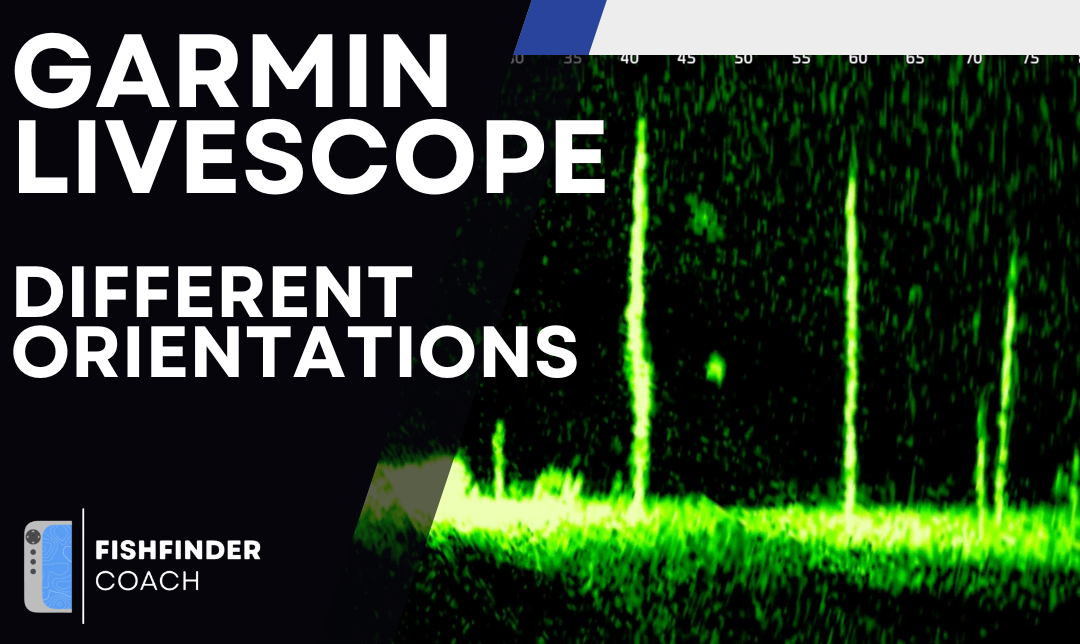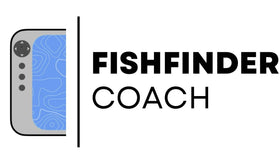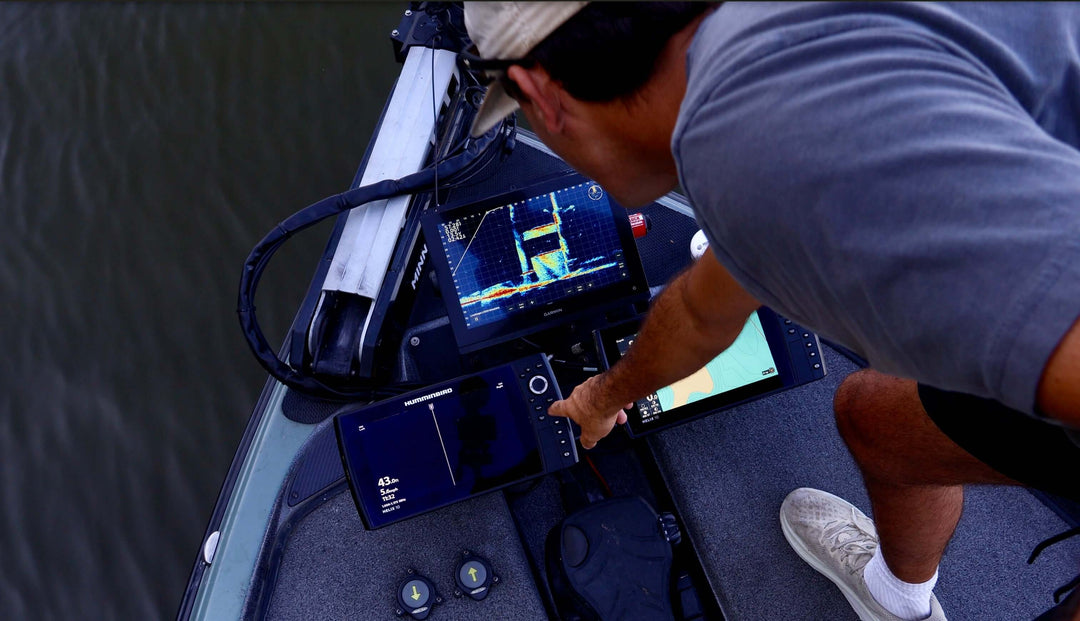Understanding LiveScope Orientations: Forward, Down, and Perspective Mode

Garmin LiveScope is one of the most powerful real-time sonar tools available, but choosing the right orientation is key to maximizing its effectiveness. Whether you’re scanning for fish ahead, looking straight down, or mapping out shallow structures, each LiveScope mode uses its transducer’s three sonar bands differently.
This guide breaks down Forward Mode, Down Mode, and Perspective Mode, explaining how each works, when to use it, and how to adjust Perspective Mode for different depths.
How LiveScope’s Three Sonar Bands Work
The LiveScope transducer has three sonar bands, and their positioning changes based on which mode you’re using:
- Down Mode – One band is parallel to the bottom, one points backward, and one points forward.

- Forward Mode – One band is parallel to the bottom, while the other two point forward.

- Perspective Mode – The transducer is rotated sideways, with one band perpendicular to forward, one pointing right, and one pointing left.

Each mode is optimized for different fishing techniques, so understanding how the sonar bands are positioned will help you get the best image possible.
1. Forward Mode – Scanning for Fish & Structure Ahead
How It Works
- One sonar band is parallel to the bottom, providing an accurate, level scan.
- The other two bands are angled forward, giving you a wide field of view ahead of the boat.
When to Use Forward Mode
✅ Casting to fish ahead of the boat
✅ Looking for structure before getting too close
✅ Tracking suspended fish in open water

2. Down Mode – Vertical Fishing & Watching Bait
How It Works
- One sonar band is parallel to the bottom, providing a clear bottom reading.
- One sonar band is pointed forward, picking up structure in front.
- One sonar band is pointed backward, capturing movement behind the transducer.
When to Use Down Mode
✅ Vertical jigging under the boat
✅ Tracking your lure as fish follow it
✅ Fishing directly over structure (brush piles, drop-offs, or rock piles)

3. Perspective Mode – Scanning Large, Shallow Areas
How It Works
- The transducer is rotated sideways to provide a wide, top-down view.
- One sonar band is perpendicular to the forward direction, acting as the "main beam."
- The other two sonar bands are angled left and right, giving a panoramic scan.
When to Use Perspective Mode
✅ Scanning shallow flats or grass beds
✅ Finding fish around docks or structure in 10 feet or less
✅ Covering large areas quickly
Adjusting Perspective Mode for Depth
You can adjust the angle of the transducer in Perspective Mode to fine-tune the image based on depth:
- Shallow water (5-10 feet): Keep it parallel to the surface for maximum coverage.
- Mid-depths (10-15 feet): Angle the transducer 10-20° below parallel to pick up more detail.
- Deeper than 15 feet: Angle the transducer up to 30° below parallel to maintain clarity while still covering a large area.


Which LiveScope Mode Should You Use?
| Mode | Best For | Sonar Band Positioning |
|---|---|---|
| Forward Mode | Casting ahead, tracking suspended fish | One band level, two pointing forward |
| Down Mode | Vertical fishing, tracking lures under the boat | One band level, one forward, one backward |
| Perspective Mode | Scanning shallow flats & structure | One band perpendicular, two pointing sideways |
Final Thoughts
The best LiveScope orientation depends on how and where you’re fishing.
- Use Forward Mode when searching for fish and structure ahead of the boat.
- Use Down Mode when vertical fishing and tracking your bait directly below.
- Use Perspective Mode when scanning large, shallow areas for fish and structure.








